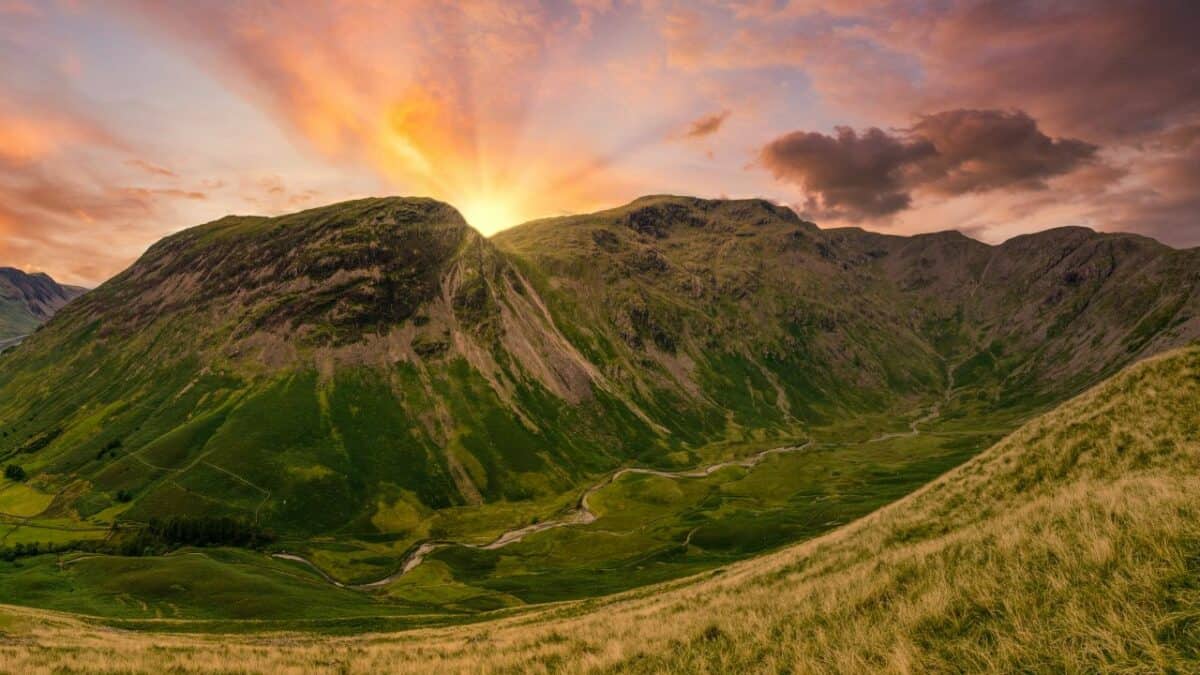The Lake District is a prime location for wild camping and is one of Britain’s most beautiful regions – it is incredibly popular with outdoor enthusiasts due to its crystal-clear bodies of water, towering mountains, and picturesque villages.
Wild camping has swept the country with its promises of endless peace and quiet, breathtaking views, and the chance to find your way back to nature by going off-grid.
Here’s everything you need to know about the area’s best wild camping spots.
Map of Wild Camping Spots in the Lake District
Click on the map icons for more information about each wild camping area.
Is Wild Camping in the Lake District Legal?
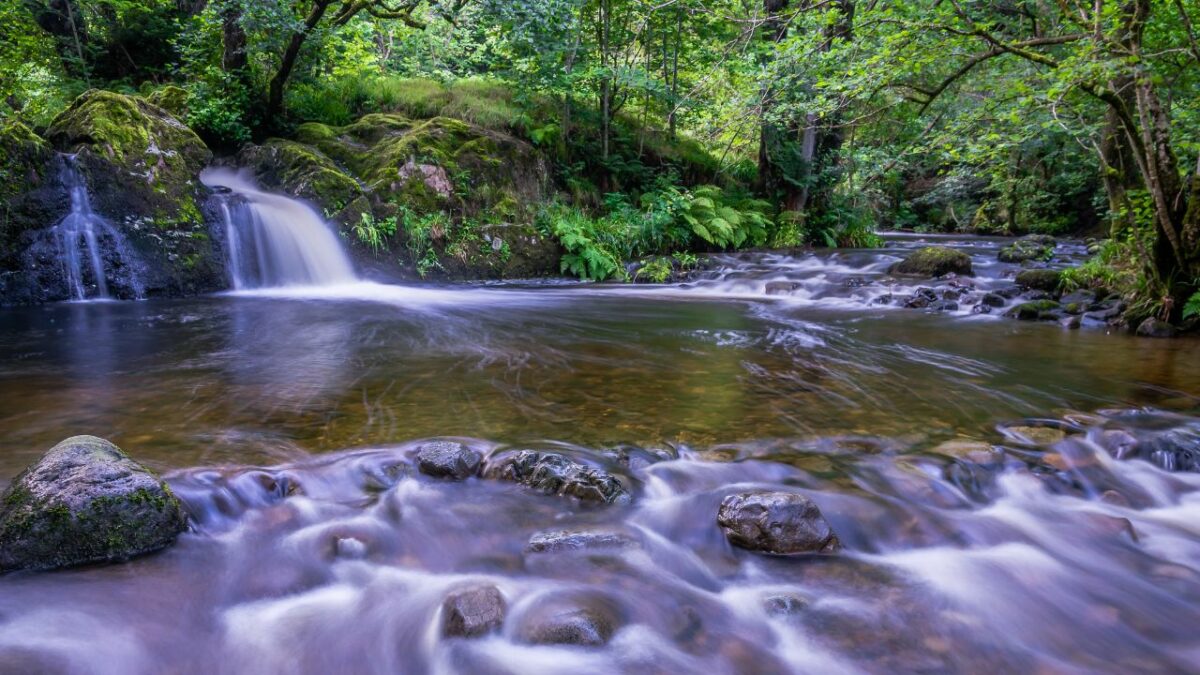
It is only allowed to wild camp anywhere in the Lake District with the landowner’s permission. In other words, campers can pitch their tents as long as they check with the property owner they’d like to stay on first.
Camping on land owned by the Lake District National Park Authority is prohibited, but lots of people do. However, you can be fined.
One important thing worth mentioning is that many people who’ve already camped in the Lake District claim obtaining permission isn’t necessary. It’s said that you should have no trouble as long as you are not impacting or disturbing the surroundings while camping.
Please note that this is not a guarantee. If you are going to camp without permission set up your camp about an hour before sunset and move on first thing in the morning. But remember when you pitch your tent on someone’s land without their explicit permission you might end up having to move.
How to Choose a Wild Camping Spot in the Lake District
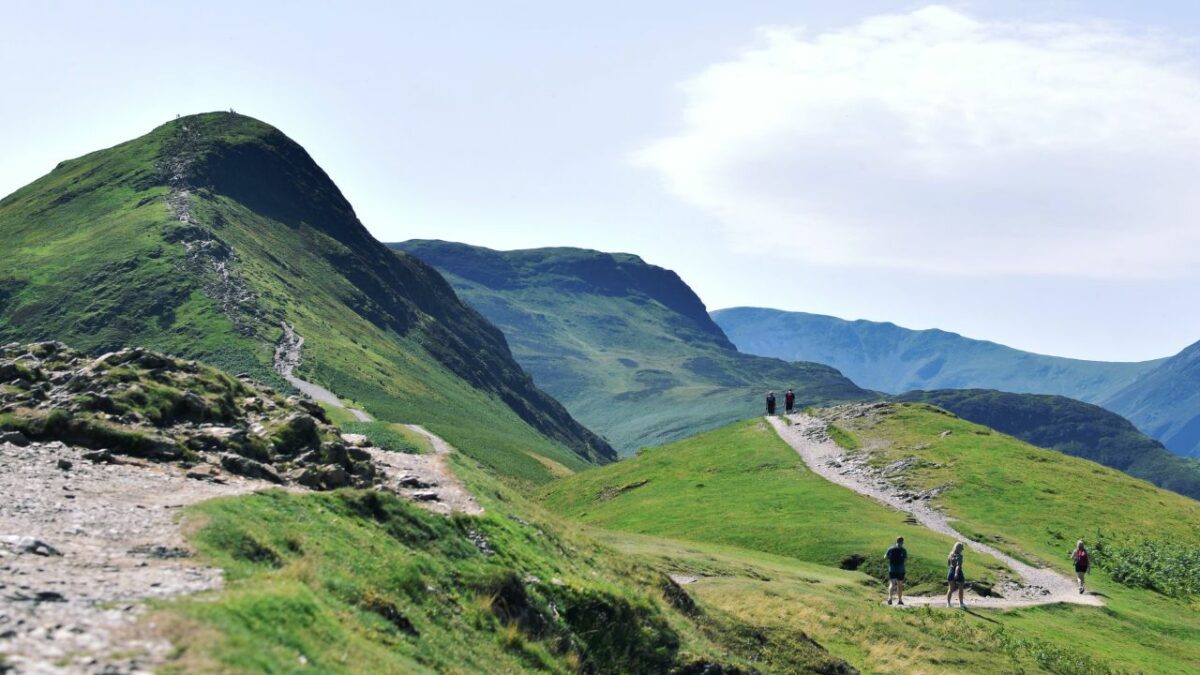
If you wild camp in the Lake District have a rough idea where you plan to stay. Unless you’re camping in a bivvy bag, you’ll want a flat, soft, and not too boggy area to stake your tent down.
Wild camping in the Lakes means avoiding areas and footpaths that walkers frequently use. The aim is to blend into the landscape undetected. If you’re camping in a place with much foot traffic, you’re more likely to be detected and moved on.
Camping in large groups that require more than two tents is not recommended. Make sure your tent blends in with the scenery as much as possible – a good reason to avoid those bright red tents like the Big Agnes Bunk House! Take your litter with you, and do not light a fire, even if it looks like someone made one at your camping spot.
The Best Lake District Wild Camping Spots
Sprinkling Tarn, Rosthwaite
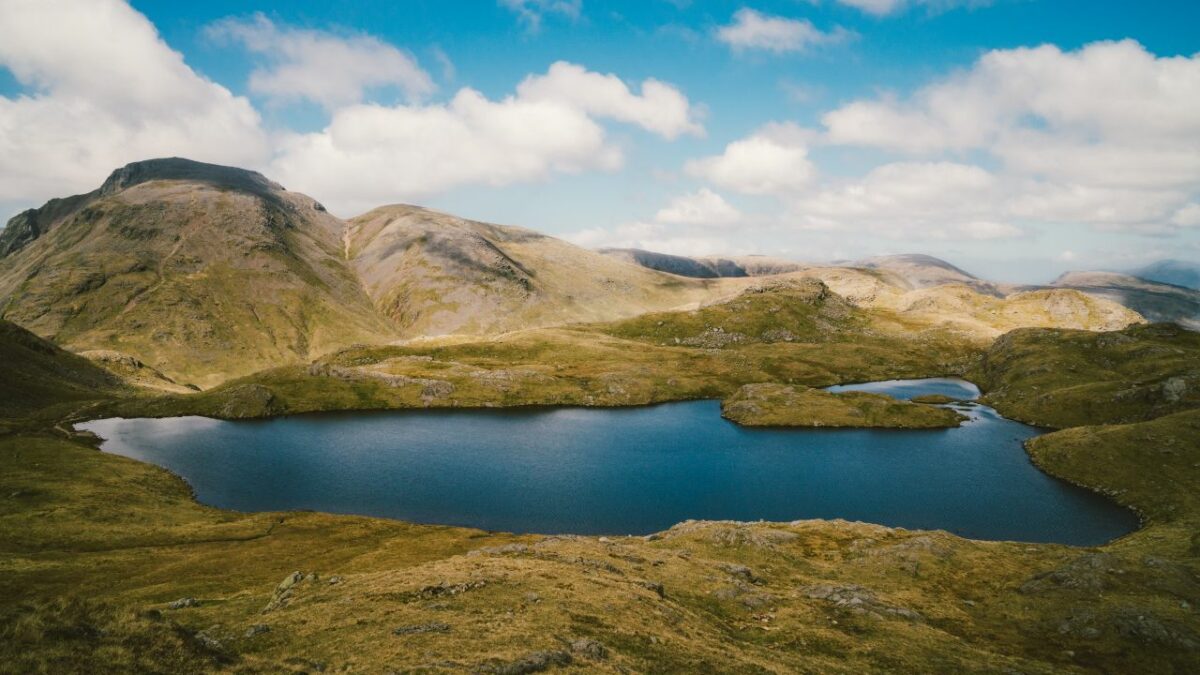
Any wild camper will recommend Sprinkling Tarn in Rosthwaite if you ask them where to camp in the Lake District. It is located in the shadows of Scafell Pike and offers breathtaking views in all directions. It is one of the largest high-level tarns in the area.
When the summer months arrive, Sprinkling Tarn can become crowded due to its popularity as one of the best wild camping sites in the Lake District. Don’t let the area’s popularity put you off, though – there is plenty of soft, flat ground around the tarn. Finding a quiet spot to pitch your tent may take some walking time, so be prepared.
Wild swimming is very popular at Sprinkling Tarn. This is primarily due to the small island in the middle of the lake – an excellent spot for diving.
For those who’d prefer to tackle Scafell Pike, this is the perfect place to stay the night before the hike. The sunsets in this region are spectacular. Finally, there are plenty of places in the area to stay at if you’d prefer to sleep in a warm bed before the hike.
Codale Tarn, Grasmere
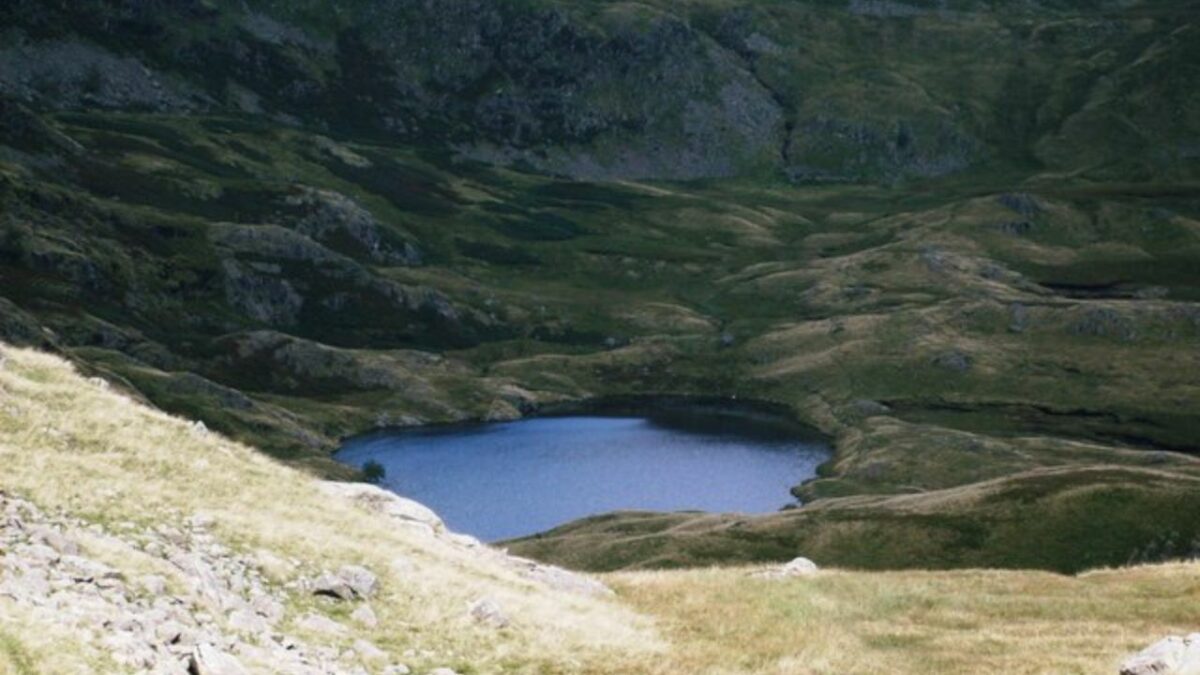
The Codale Tarn is the perfect destination if you are an experienced wild camper. Regular campers consider this area one of the region’s best secret spots.
However, remember that you’ll have to hike 468 meters up Grasmere Common to reach the tarn. For that matter, remember to pack your tent and adequate walking gear before you leave.
An overnight stay in the Lake District would only be complete with swimming in one of the lakes. In this case, that would be Codale Tarn, a shallow lake surrounded by gently sloping ground. You can pitch your tent in complete peace and quiet here.
This wild camping spot is only 2 ½ miles from the picturesque village of Grassmere. However, you will soon leave the village’s bustle behind you as you walk to Codale Tarn and take in the tranquility. Grassmere is close to various attractions, making it an excellent base for exploring the Lake District.
Some of these include the stunning Belles Knot waterfall and the crystal-clear lake of Easedale Tarn. A confident walker can climb Tarn Crag for magnificent views of Rydal Water, Windermere, and Easdale.
Lingmoor Fell, Ambleside
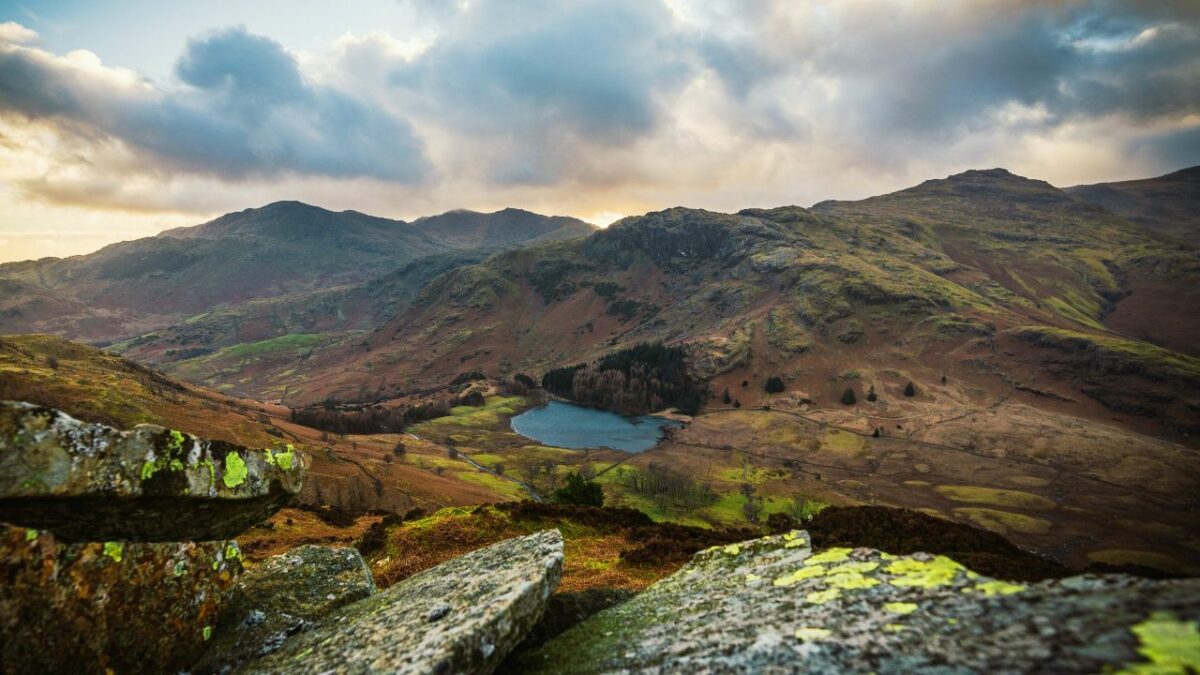
Among the top wild camping recommendations near Ambleside is Lingmoor Fell, an excellent destination for anyone looking to pitch their tent in the Lake District. The region’s scenery is nothing short of breathtaking, enticing visitors all year round.
However, wild campers will have a better experience during the warmer part of the year, as Lingmoor Fell is quite rocky and boggy. A wide range of secluded spots spread everywhere around the fell, making it a perfect area for pitching a tent and enjoying views of the adjacent Langdale Peaks. It is important to note that the ground becomes much steeper as you climb higher.
The majority of the fell is covered by heather. The heather blooms in a spectacular display as the sun sets and the golden light fills the sky. In Norse, heather is called Lyng, which is precisely how this marvellous area got its name.
Ambleside, situated less than 5 miles to the east, is a popular holiday destination in the Lake District. It boasts an admirable selection of restaurants and shops and is famed for its dazzling views of Lake Windermere. There are also plenty of excellent B&Bs and hotels in the town – a great option for those who want to avoid spending the night under the canvas.
Haystacks, Cockermouth
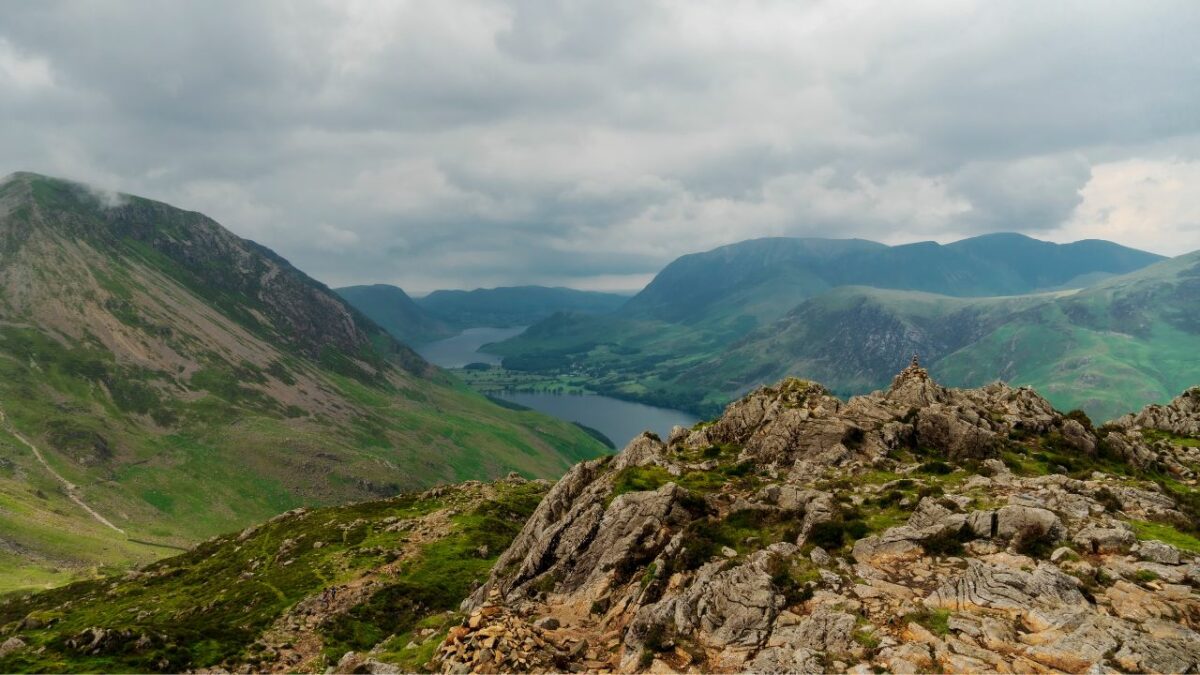
Popular with campers and walkers, Haystacks hill can be found in the Buttermere Valley (northwest Lake District). There’s plenty of sheltered space to pitch a tent on the hill’s large, flat plateau, which makes this location ideal for wild camping.
Like many other places in the district, Haystack is the most crowded during the summer months. What makes this hill so famous is the fact that the ashes of Alfred Wainwright, a renowned walker, were scattered near the fell’s summit – at Innominate Tarn – at his request.
The tarn mentioned above is another excellent spot for tent-pitching. However, if you pitch during the day, prepare for a lot of traffic: Innominate Tarn is a popular walking spot.
If a trip to the Lake District isn’t feasible, wild camping in Norfolk’s diverse landscape offers a comparable escape. While the terrain might not be as mountainous as Haystacks Hill, the rolling countryside, interspersed with quaint villages and expansive farmlands, presents an alternative rustic charm.
Ennerdale Valley, Ennerdale
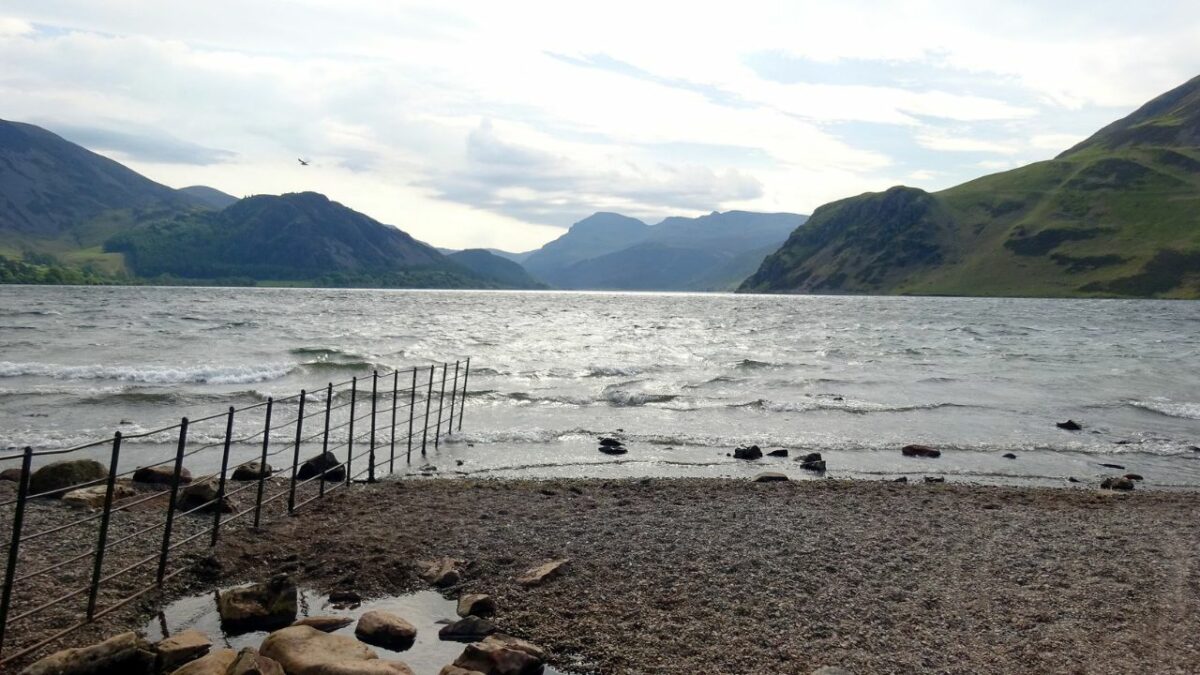
Among the most remote regions of the Lake District, the Ennerdale Valley is home to Ennerdale Water, the most westerly lake in the whole National Park. Here, campers can expect rolling hills crisscrossed with walking paths and miles of untamed woodland. That is precisely what turns it into one of England’s best wild camping destinations.
The Ennerdale Water mentioned above is the valley’s wild camping highlight. You can see the majestic Pillar mountain crags from this spectacular lake. In addition, the lake has exceptionally clear water. During the summer, you will only encounter a handful of other campers/walkers while staying in the valley.
Wild camping in Ennerdale is best done in the woods, which provides plenty of secluded clearings for pitching a tent and enjoying the silence. Those looking for a walking challenge should hike up the Angler’s Crag: at its summit, expect astonishing views of Ennerdale Water and the surrounding hills.
Alternatively, you could just enjoy the famous lack of traffic – thanks to no roads running through the valley – as you stroll between its rocky outcrops and patches of trees.
Wild Camping In Ullswater
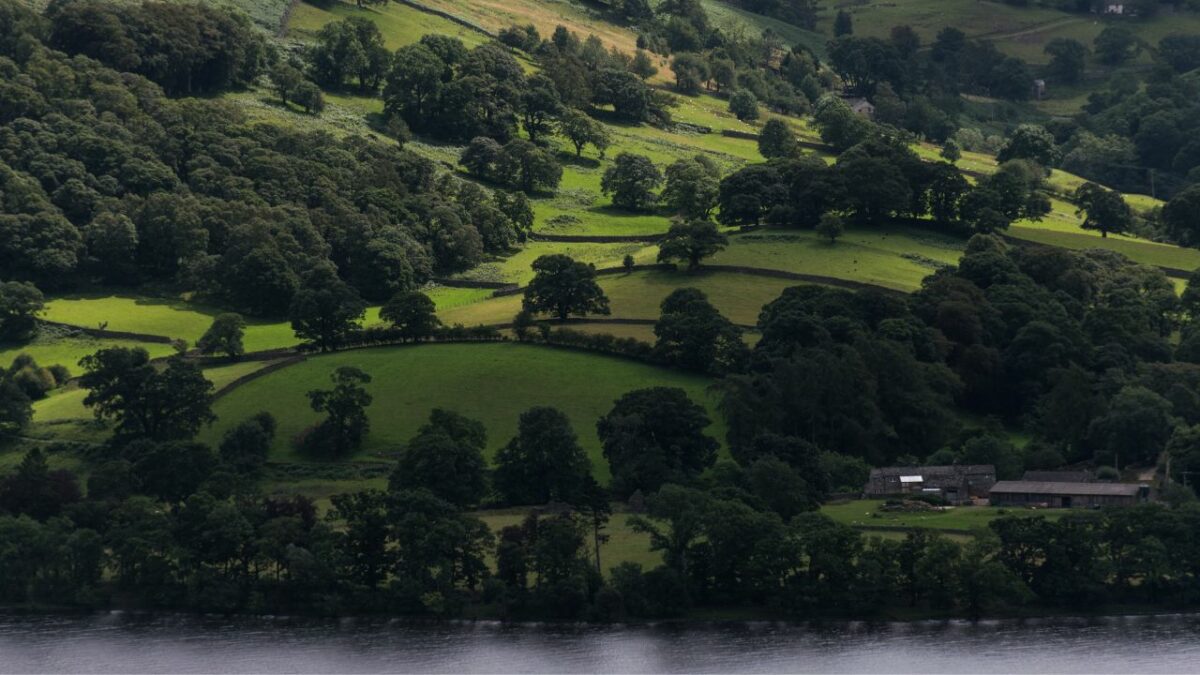
As the UK’s most gorgeous lake, Ullswater is surrounded by breathtaking fells that provide stunning views. It’s one of the best places to wild camp in the UK.
There are bustling tourist villages, popular footpaths, houses, and farms along the lakeshore. For that matter, camping close to the lake is not recommended. However, if you climb one of the fells adjacent to the lake, you’ll be in for a treat.
Whether you prefer dinky hills or soaring summits – such as Helvellyn – there are plenty of options. Explore the map, pick a spot, and take in the views of Britain’s most attractive lake.
Wild Camping In The Scafell Massif
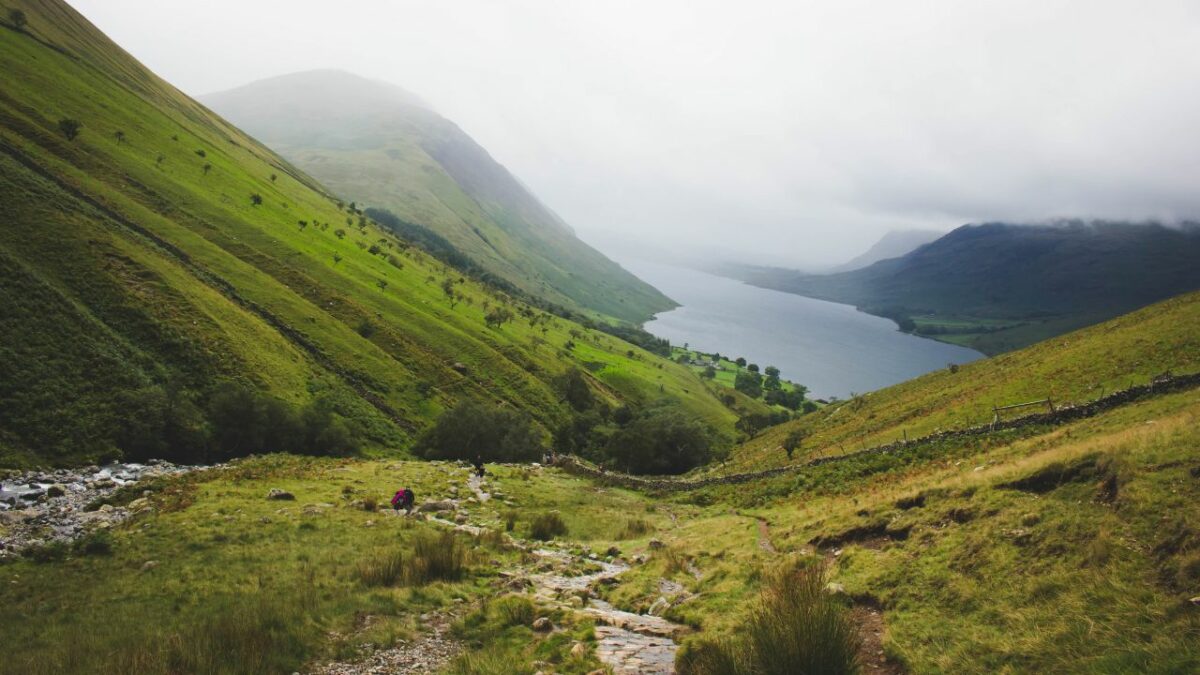
Its height, perhaps its most iconic characteristic, entices many outdoor enthusiasts to spend the night on the roof of England – Scafell Pike.
However, the summit is quite rocky and provides little protection in poor weather. So, wild camping is not always the most practical option. On the other hand, when looking at the Scafell Massif as a whole, you can find plenty of opportunities for tent-pitching. Here, you can find many smaller subsidiary tops, mountain tarns, hidden valleys, and other wild, rugged spots.
With a bit of luck, you’ll see Wast Water stretching out westwards – it’s a spectacular sight in every sense of that term.
Absolutely, while the rugged allure of Scafell Pike’s height is tempting, there’s an alternative that’s just as enchanting: wild camping in the New Forest. This southern gem offers a verdant contrast to the rocky heights, teeming with idyllic glades and open heathlands perfect for a tent. A night under the stars here, among the ancient woodland and gentle, free-roaming wildlife, provides an equally captivating adventure, marrying the essence of England’s tranquil lowlands with the spirit of wild camping.
Wild Camping In The Borrowdale Valley
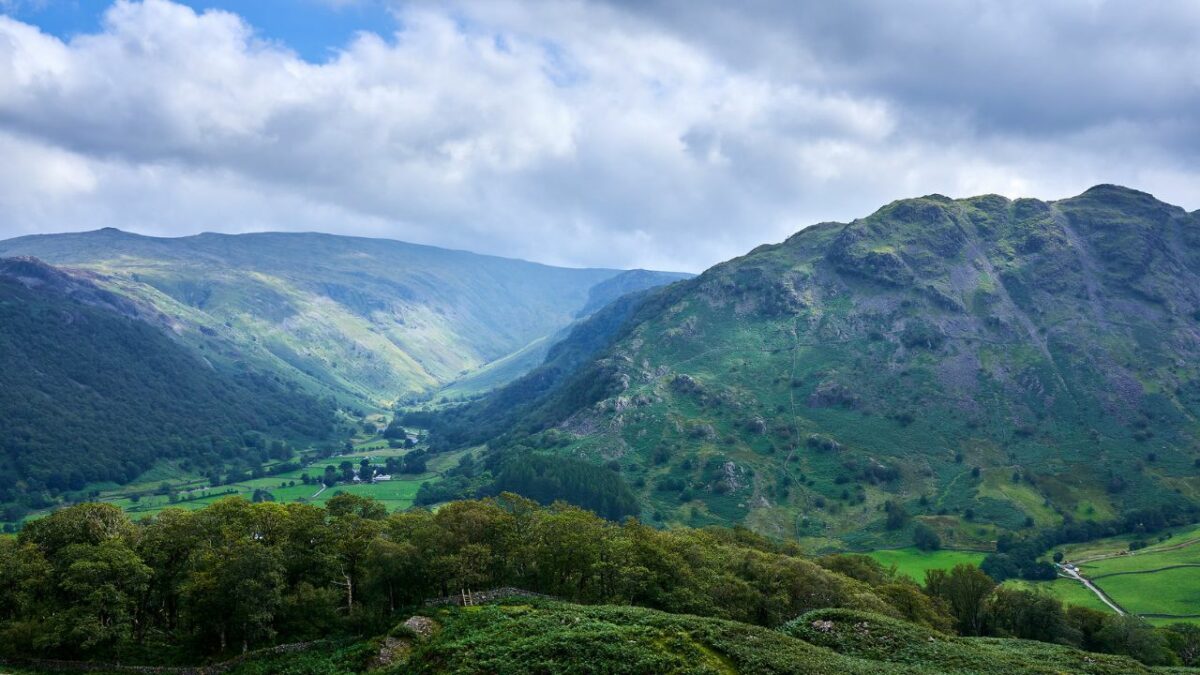
Extending south from Derwentwater, the Borrowdale Valley stands as one of the most beloved outdoor destinations in the whole of the Lake District. Called “the fairest of England’s valleys” by Alfred Wainwright, this place offers scenic beauty to all those interested in wild camping.
You’re best off avoiding the valley bottom if you want to stay away from crowds. There are plenty of wild camping spots in the surrounding fells if you don’t mind a bit of hiking.
To the south of Rosthwaite is the bumpy and lumpy Glaramara Ridge – always full of wonderful surprises – and to the east is a group of rolling, grassy hills and lovely tarns. Between these places is Langstrath, you’ll find an uninhabited, vast, and rugged hollow with many excellent spots for camping in the wild.
Wild Camping In Ennerdale

A wild and remote place with a distinctive character, Ennerdale rises abruptly out of West Cumbria’s coastal plains. This place feels like something other than northwest England: River Liza and the magnificent forested slopes make it feel more like Scotland or Scandinavia.
As such, it’s one of the Lake District’s best wild camping destinations. However, an important thing to remember here is that Ennerdale’s best tent-pitching spots are up high. In other words, this place is best explored when there’s no rain or high wind.
Those seeking a quieter camping experience should head south of the lake, where there are grassy, gentle hills full of great camping spots. On the other hand, walking from Great Borne to Buttermere Edge ridge north of the lake provides breathtaking views over Crummock Water and Buttermere.
Finally, wild campers looking for adventure and excitement should head southeast. There, you will find Pillar and Steeple: Ennerdale’s dramatic, craggy mountains.
Wild Camping In Loweswater Fells
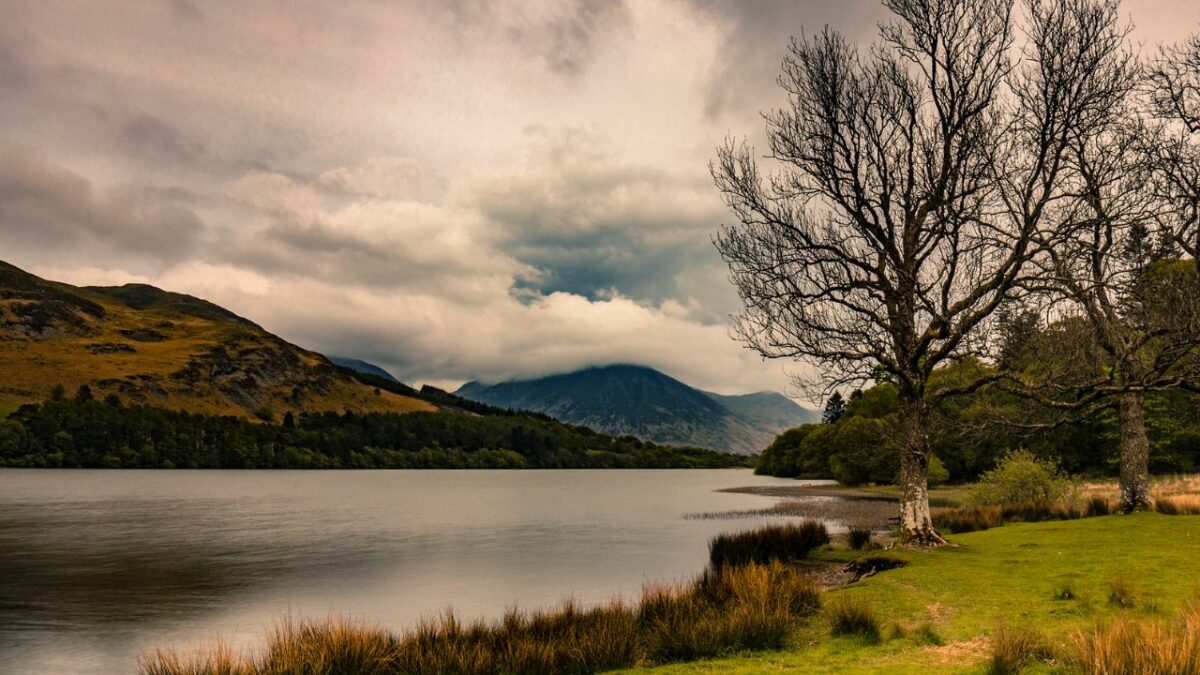
Out of all the lakes in the Lakes District, Loweswater is undoubtedly the most overlooked and understated. It lacks the beauty of Buttermere, the ruggedness of Wast Water, or the mass appeal of Derwentwater – but its charm is undeniable. A peaceful little lake, Loweswater has its own waterfall and a mixed forest of sycamore, ash, chestnut, lime, oak, and alder.
Generally, staying near the lake is discouraged, so try one of the grassy hills nearby instead. The fells to the north are small but provide stunning views towards Crummock Water and Buttermere. The fells to the south offer no spectacular views but are more remote-feeling and quieter.
For more awesome camping spots in the country, check out our guide to wild camping in Loch Lomond and our guide to wild camping at Ben Navis.
Getting to the Lake District
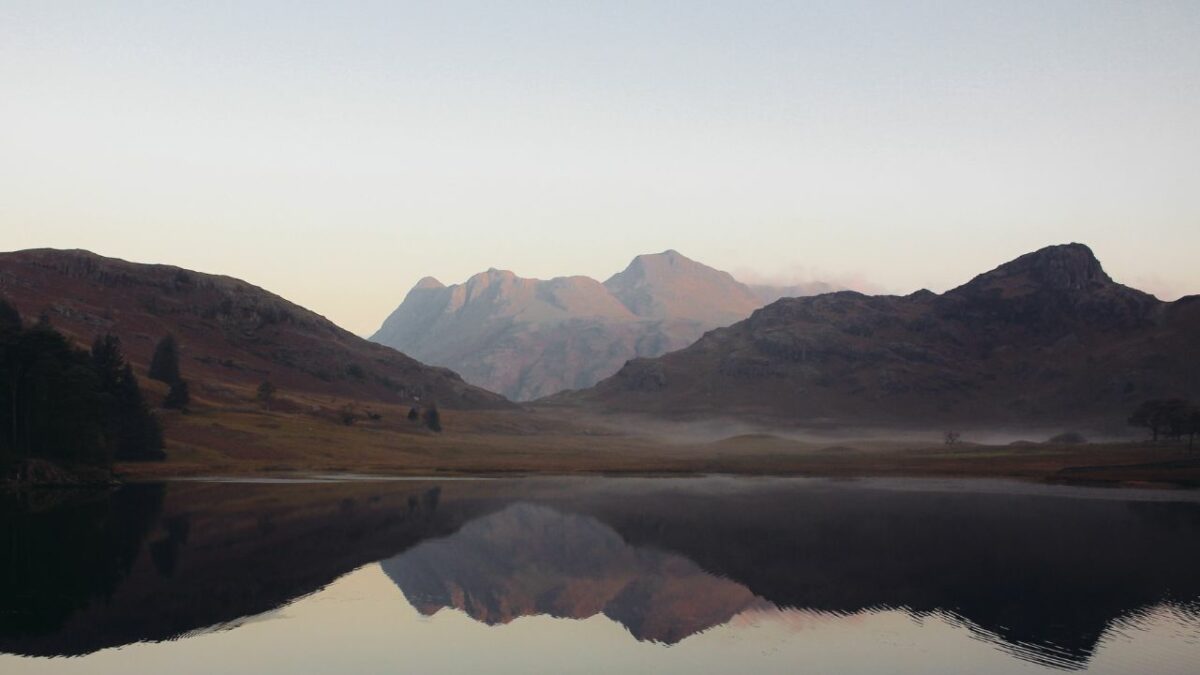
By Air
Glasgow and Manchester are the nearest international airports. From those, you can transfer via bus, coach, or train. Another option is flying into Carlisle Lake District Airport, but remember that it only operates flights between London Southend, Dublin, and Belfast.
By Train
The train is a fast, affordable, and comfortable way to reach the Lake District. Use the West Coast Mainline (London – Glasgow) and exit at Kendal (Oxenholme station). From there, you can take a train to Staveley or Windermere.
Another option is to use the Northern Rail, i.e., the train from Manchester to Windermere. You can also use the Furness Line (Lancaster – Barrow-in-Furness) and then reach Carlisle by switching to the Cumbrian Coast Line.
By Bus
The Stagecoach bus network covers Cumbria and the Lake District extensively. This network lets you easily explore the park since it serves many of the most famous areas. Popular routes include:
- Stagecoach 6: Barrow > Windermere
- Stagecoach 508: Penrith > Patterdale
- Stagecoach 599: Kendal > Grasmere
- Stagecoach 555: Lancaster > Keswick
By Road
Travelling to the Lake District by car allows you to explore this breathtaking area at their own pace. You will, however, need to keep in mind that the roads can be winding and narrow at times, as well as that most vehicle parks are paid and can get pretty crowded.
The following are average driving times from the major cities of Britain to the Lake District:
- Birmingham: 3.25 hours
- Liverpool: 2.25 hours
- Glasgow: 2.5 hours
- Manchester: 2 hours
- London: 5.5 hours
Where to Base Yourself in the Lake District
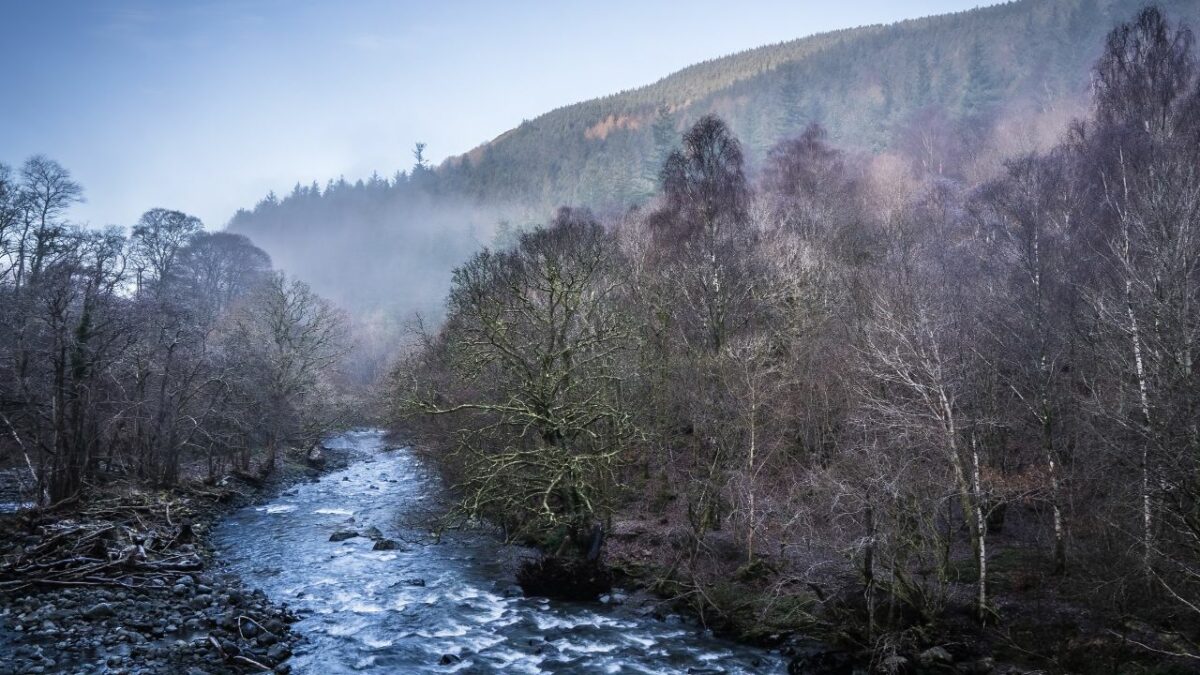
I like to stay at Keswick or Windermere when starting a wild camping adventure or hike in the area.
To reach Keswick, you must take a train to Penrith and switch to a local bus. On the other hand, trains and coaches are running directly to Windermere. Both towns are excellent bases with plenty of good pub food to keep you fuelled and shops to top up on supplies.
What Equipment Do I Need for Wild Camping?
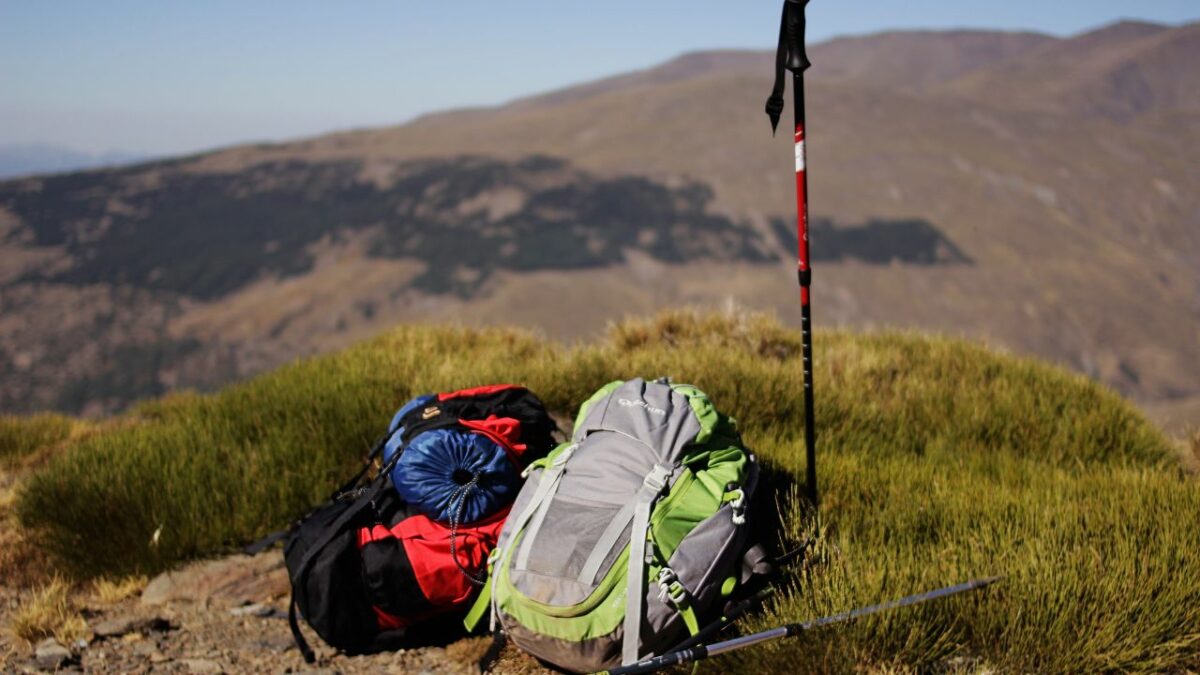
You’ll get slightly different answers each time you ask a wild camper what equipment to bring. While everyone has their favourite camping items, here is a basic list of what you might want to take along:
- A sturdy tent
- A durable & supportive rucksack
- A comfortable sleeping bag
- A comfortable camping mattress
- Cooking utensils & equipment (set of cutlery, a bowl or a plat, and a pan)
- A camping stove
- A torch
FAQs
How Do I Get Permission to Wild Camp?
When you want to wild camp on privately owned land, contact the landowner and ask if you can stay on their land for a certain amount of time. They have every right to refuse you, but it shouldn’t be an issue as long as you promise not to disturb or impact the surroundings.
Can You Wild Camp in Windermere?
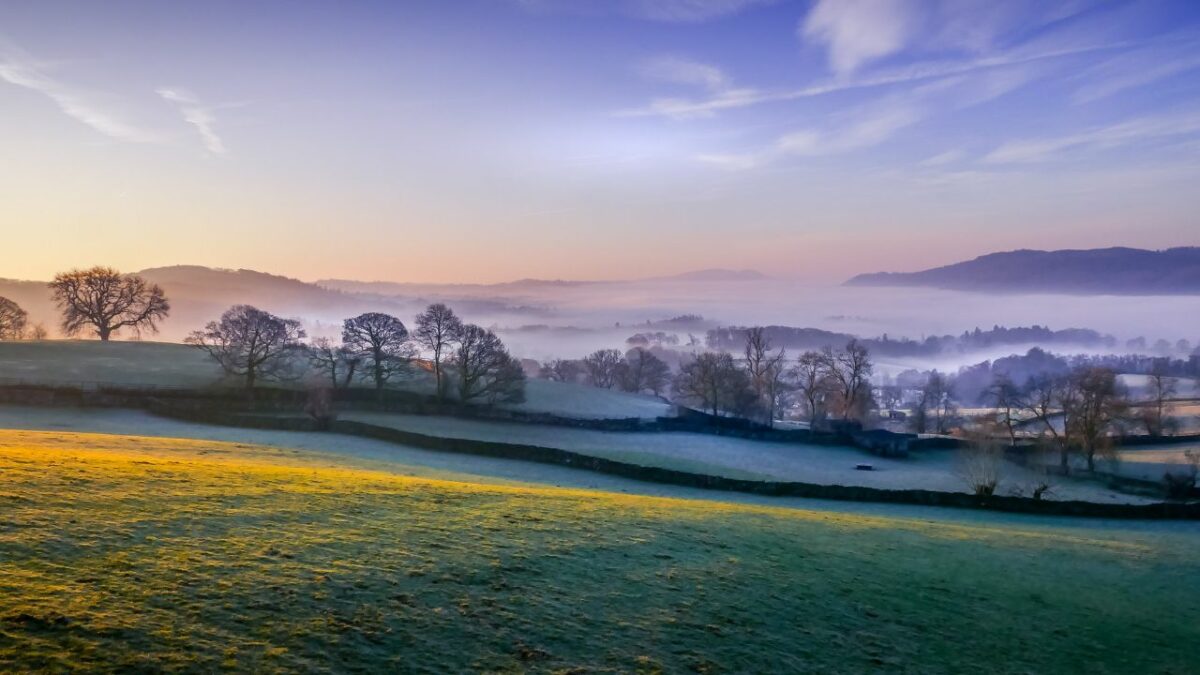
Wild camping at Lake Windermere is not legally permitted, just like in other parts of England. Nevertheless, many people continue to do this. Camping is generally allowed as long as the landowner gives permission.
Can You Wild Camp in Keswick?
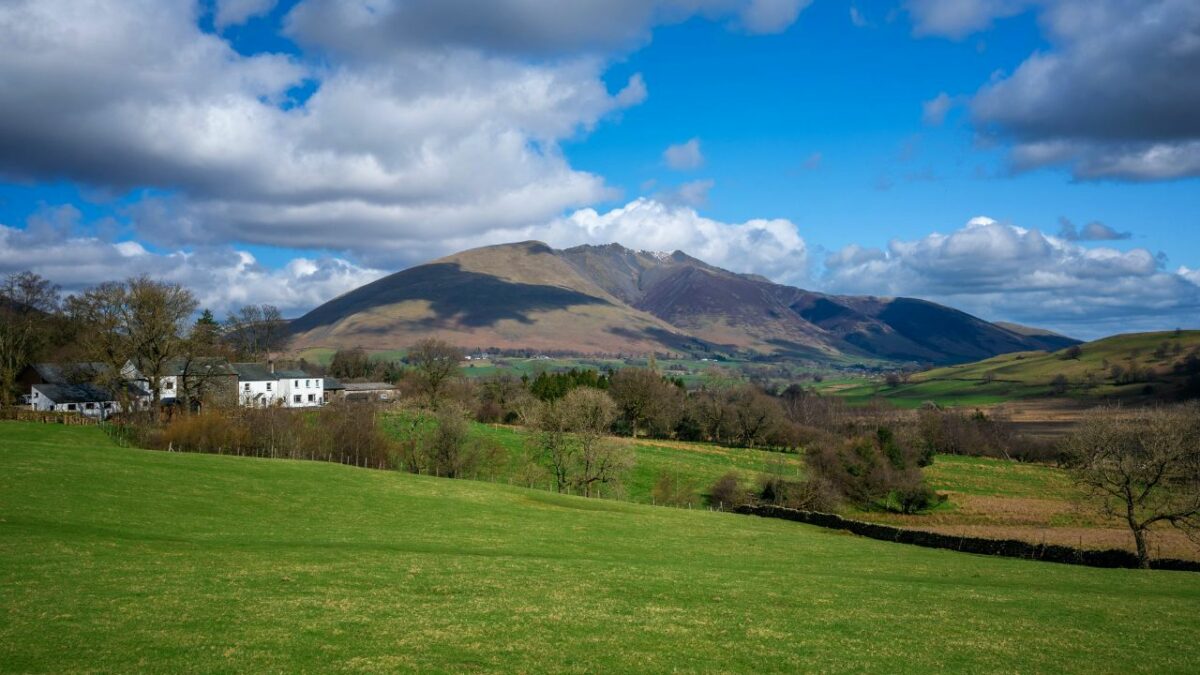
You’ll be good to go as long as you obtain the landowner’s permission. Keswick is situated in the heart of the Lake District and features plenty of unique wild camping spots in its surroundings.
Where to Next?
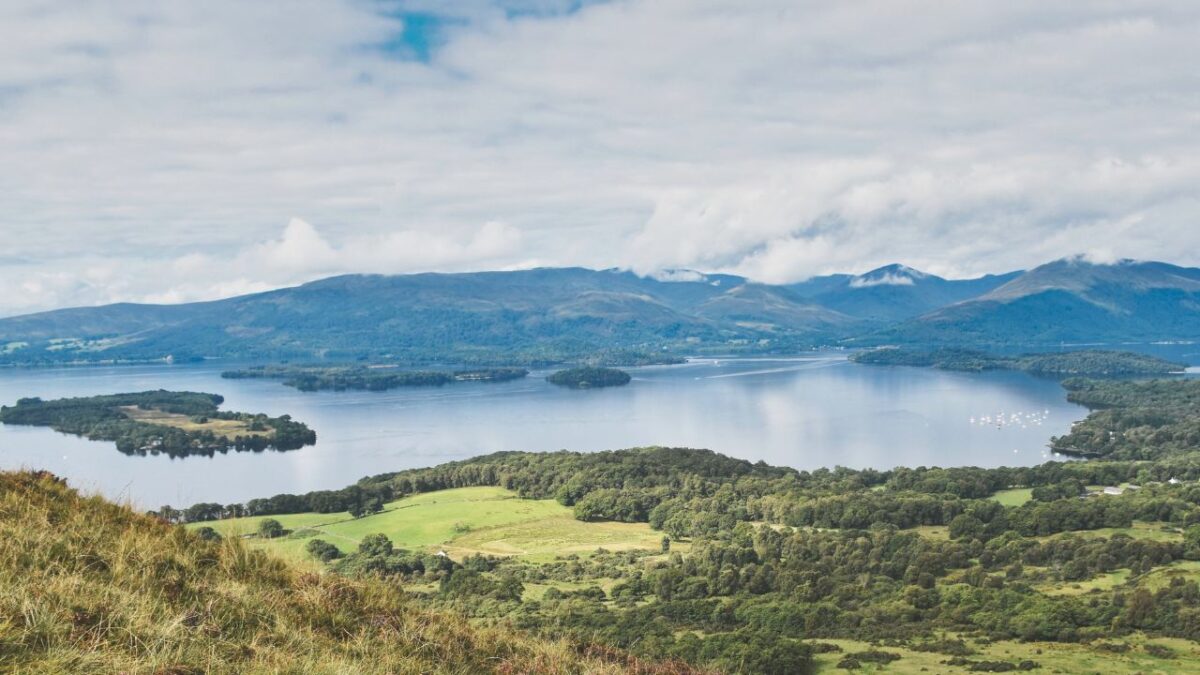
There’s a good chance you’ll fall in love with wild camping after spending a couple of nights under the stars in England’s largest – and perhaps the most beautiful – national park. You’ll want more, and fortunately, breathtaking wilderness areas are aplenty in Britain.
For your next wild camping adventure, consider going north and taking in the wondrous scenery of Loch Lomond. While it feels like a whole world away from civilisation, the Loch Lomond & The Trossachs National Park is only 100 miles north of the Lake District, where it stands as an ideal destination for a memorable Scottish break.

I love hiking, backpacking, and camping. From the Camino de Santiago to the West Highland Way in Scotland or simply a great day hike on the weekend. Hiking refreshes me, my mind, and keeps my body reasonably fit. So far I have walked three Camino routes and many other long distance hikes in the UK, Canada, and around the rest of Europe. One of the best was my hike up Ben Nevis.

